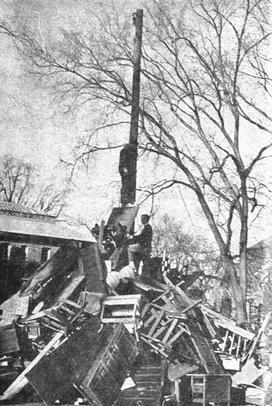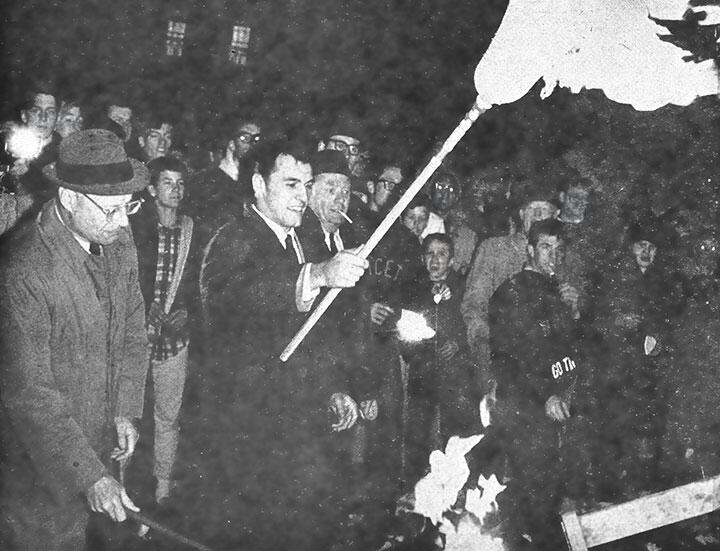
Coached by Dick Colman, who would lead the Tigers to four Ivy League titles, and captained by All-American fullback Cosmo Iacavazzi ’65 *68, Princeton shut out four of its opponents and vanquished the other five by an average margin of 14 points.
Princetonians were euphoric. “Puffing five-inch stogies and quaffing California champagne, Princeton’s undefeated team broke training with grandeur,” The Daily Princetonian reported, following Cornell’s defeat Nov. 21. Two days later, a mountain of combustibles, built around a 30-foot telephone pole and surmounted by an outhouse, was ignited on Cannon Green.
Not only sparks but toilet paper flew — so much that a proctor expressed the hope that students would henceforward have to “use their shirttails.” The forces of law and order had reason to be testy, for this was the 10th bonfire to be held within a week.
The other nine were kindled by the University’s decision to cancel the official blaze that should have marked Princeton’s victory over Yale Nov. 14. Dry conditions raised fears “that any flying ember would light up the whole town,” but this did not prevent an outbreak of undergraduate pyromania. On Nov. 16, bonfires were lit across the campus, including one near Campbell Hall that “sent flames soaring 20 feet,” thanks to “an impressive array of doors, bike racks, mattresses, and furniture.” To the sound of dormitory fire alarms, exploding Roman candles, and shouts of “We’re No. 1!” and “We want sex!” proctors struggled to disperse excited crowds.
Though damage proved minor, nine students were suspended. Addressing the thousands gathered on Cannon Green Nov. 23, Iacavazzi said, “I’d hate to see what would have happened if we’d lost.”
John S. Weeren is founding director of Princeton Writes and a former assistant University archivist.













No responses yet